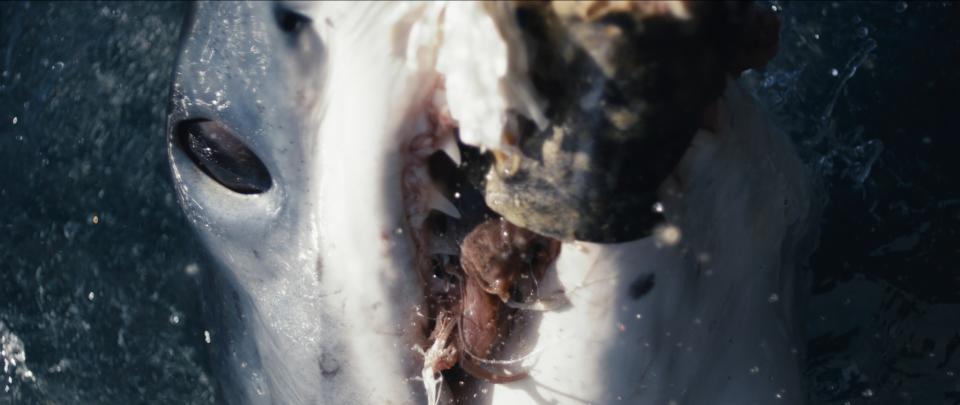In 2013, fishers off Southern California reeled in an enormous, 11-foot-long (3.3 meters) mako shark. At over 1,300 pounds (590 kilograms), the animal — dubbed “The Beast” — was one of the heaviest mako sharks ever recorded.
In recent years, seals along the California coast have been found with wounds indicating they’d been attacked by large shortfin mako sharks (Isurus oxyrinchus) measuring over 12 feet (3.6 m) long.
Shortfin makos tend to grow to around 7 feet (2.1 m) long, on average, according to the National Oceanic and Atmospheric Administration. But they can get much bigger. In the 1950s, off the coast of Turkey, fishers reeled in a mako measuring over 19 feet (5.8 m) long.
In the new Shark Week show “Makozilla,” shark biologist and wildlife presenter Craig O’Connell went looking for supersized makos to find out if only one shark had grown to a mammoth size, or if the individuals in the North Pacific population are now much larger than they once were.
Related: Watch hammerhead sharks swim in ‘cyclones’ around ancient volcano in rare footage
“Are there more absolutely massive makos out there, and how are they related?” O’Connell told Live Science. “Is it one particular family of makos, or is this a characteristic of the entire population along the coast of California?”
Through a series of experiments, the team gathered bite impressions on bait and measured the animals as they swam alongside the boat. One shark was at least 12 feet (3.7 m) long, while an analysis of the bite marks revealed another was at least 14 feet (4.3 m) long.

A final test involved getting tissue samples from another 12-foot mako. This was then compared with DNA from “The Beast” and another large mako caught years earlier. The results showed that the sharks were related — but it was unclear how closely related they were, such or whether they were direct descendants. Inbreeding among the population may explain the link, the team said.
RELATED STORIES
—’It’s like we opened a buffet’: Sharks in Gulf of Mexico learn to steal food from fishing nets
—Elusive prickly sharks spotted gathering at underwater mountain off Panama — but why remains a mystery
—Super-healing shark regrows its fin after humans cut a huge chunk off
However, these makos may be bigger than average because of how much food is available off the West Coast. The Marine Mammal Protection Act of 1972 prevented the killing of seals and sea lions, resulting in a buffet for sharks.
“Basically, what we learned is that this characteristic of getting absolutely massive is a characteristic of the general population along the California coastline,” O’Connell said. “To me, that’s an exciting thing. It means that there’s a lot of very big makos out there … and they have the ability to control the entire ecosystem.”
The risk, he said, is that fishers are currently allowed to catch two makos per day — a rule that could potentially have devastating consequences for this healthy population.
“I think it’s critically important for people to understand that we need these sharks in the marine environment,” he said. “I like to think of the ocean as a giant Jenga puzzle [tower] and the sharks represent that critical piece. If you remove that piece, that Jenga puzzle is going to collapse. And I just think people need to recognize that these animals are super, super important and we should really do everything in our power to protect them.”
Source Agencies

